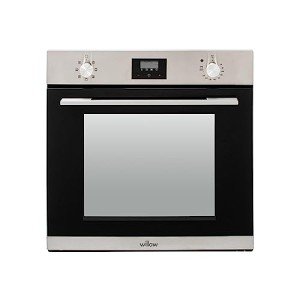10 Times You'll Have To Learn About Oven Built In

The Rise of Built-In Ovens: A Seamless Approach to Modern Cooking
In contemporary cooking areas, where design looks blend flawlessly with functionality, one device sticks out as a true game changer: the built-in oven. As house owners and chefs alike continue to seek innovative options that boost their cooking experience, built-in ovens have actually become progressively popular. This short article explores the benefits, factors to consider, and patterns surrounding built-in ovens, highlighting why they are an important function in contemporary cooking areas.
What is a Built-In Oven?
A built-in oven is a kitchen appliance designed to be integrated into the kitchen cabinetry of a kitchen instead of standing alone. Unlike standard freestanding ovens, which can be moved and positioned anywhere, built-in ovens come in various styles and sizes to fit specifically within designated spaces. Readily available in single or double configurations, these ovens provide a structured appearance that complements modern kitchen styles.
Benefits of Built-In Ovens
1. Space-Saving Design
Among the most attractive benefits of built-in ovens is their space-saving design. By incorporating the oven into cabinetry, you can free up valuable counter and flooring space. This is especially advantageous in smaller sized cooking areas, where taking full advantage of room is vital. Built-in ovens can be installed at eye level, making them more available and lowering the requirement to bend down.
2. Aesthetic Appeal
Built-in ovens add to a sleek and cohesive kitchen area style. Readily available in various surfaces-- such as stainless steel, black, white, and custom kitchen cabinetry-- they can blend flawlessly into the general design. This visual appeal enhances the kitchen's visual consistency and raises the space, developing a contemporary and advanced environment.
3. Improved Functionality
Numerous built-in ovens come equipped with sophisticated cooking technologies, such as convection cooking, steam ovens, and clever functions. These enhancements permit flexible cooking choices, making it much easier to achieve professional-level results in the house. Smart built-in ovens can even connect to Wi-Fi, enabling users to control the oven from another location, get alerts, and gain access to a range of cooking programs and recipes.
4. Enhanced Ventilation
Due to the fact that built-in ovens can be integrated with kitchen area hoods and ventilation systems, they can assist maintain much better air quality and lower cooking odors. This is particularly substantial for those who like to prepare with aromatic spices and ingredients, as an efficient ventilation system can keep the kitchen area comfy and welcoming.
5. Personalization Options
Built-in ovens offer a wide variety of customization options to match individual cooking styles and requirements. From professional-grade devices with numerous cooking modes to compact designs for smaller kitchens, property owners can select the oven that fits their specific requirements. Many manufacturers likewise use customizable front panels, enabling you to match the oven's look to your cabinetry for a truly unified appearance.
Considerations When Choosing a Built-In Oven
While built-in ovens have numerous advantages, there are very important considerations to remember before purchasing:
1. Price
Built-in ovens generally include a higher price than their freestanding counterparts due to their design and installation requirements. It's crucial to consider both the expense of the oven and any additional costs related to cabinetry modifications or setup.
2. Installation Requirements
Setting up a built-in oven frequently requires professional assistance, specifically if you need to modify existing cabinetry. Make sure that you consider any expenses related to setup, including labor and prospective cabinetry modifications.
3. Size and integrated electric oven
Before buying a built-in oven, determine the designated area precisely to ensure an appropriate fit. Built-in ovens come in numerous sizes and configurations, so selecting one that aligns with your requirements and kitchen area style is vital.
4. Lifestyle and Usage
Consider your cooking habits and needs when picking a built-in oven. If you regularly host big events, a double oven may be more useful. On the other hand, if you have a compact kitchen area, a single-wall oven may be enough.
Trends in Built-In Ovens
The cooking area appliance market is continuously progressing, and built-in ovens are not exempt from emerging patterns. Some existing trends include:
Smart Technology Integration: With the rise of smart home technology, built-in ovens now frequently feature connection alternatives. This allows users to monitor cooking progress and adjust settings via mobile apps.
Energy Efficiency: As sustainability becomes a top priority, many manufacturers are buying energy-efficient built-in ovens that decrease energy consumption while maintaining efficiency.
Multi-functional Designs: Built-in ovens now provide features such as air frying, slow cooking, and steaming, supplying flexibility that satisfies a vast array of cooking methods.

Conclusion
Built-in ovens unquestionably represent a perfect blend of style, function, and benefit in today's kitchens. As more property owners select this contemporary option, the focus moves to developing a cooking space that is as aesthetically pleasing as it is useful. Whether you are building a brand-new home or redesigning your kitchen, thinking about a built-in oven might raise your culinary experience and change your cooking area into a trendy and practical sanctuary. With a range of choices offered and ongoing developments in innovation, built-in ovens remain a standout choice for both novice cooks and culinary lovers alike.
